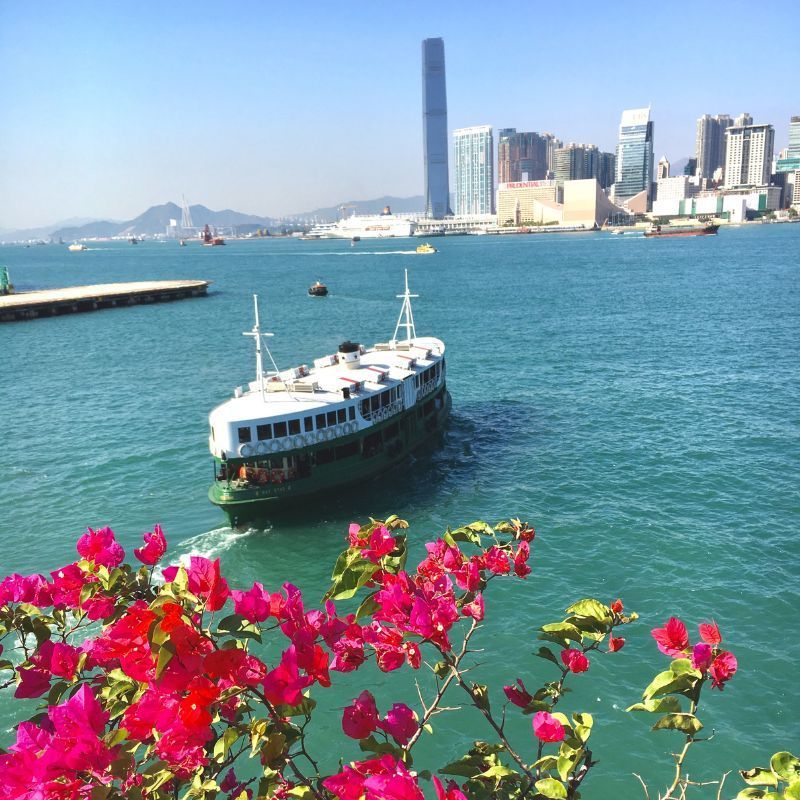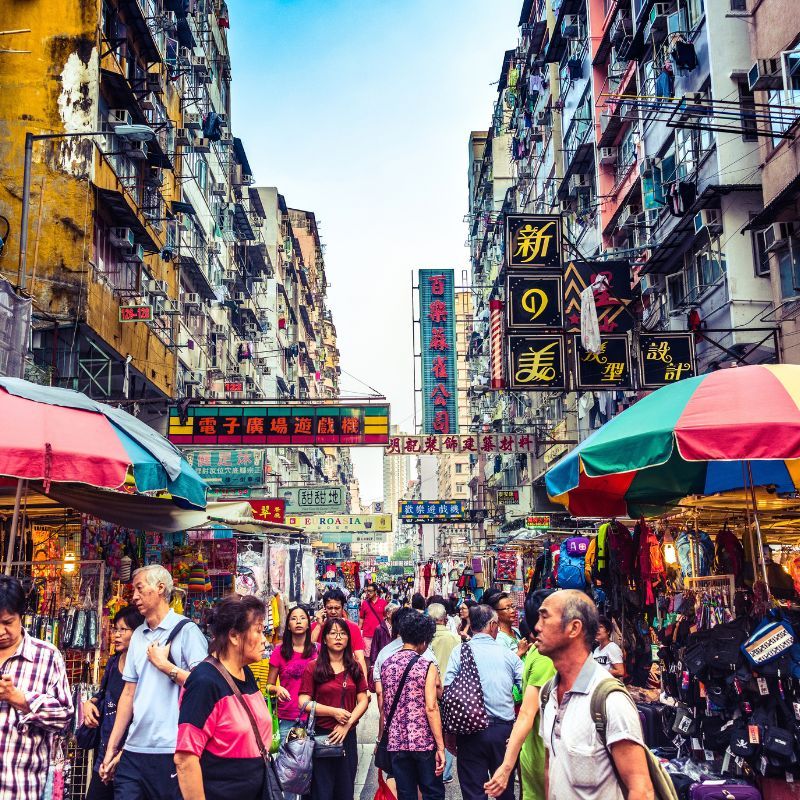
Whether you’re interested in top-of-the-class bars, shopping haunts, culinary gems, or hiking trails, there’s no dearth of reasons to plan a holiday in Hong Kong. Team that up with Hong Kong’s public transport system — ranked the third best in the world — and you have a swinging getaway!
When on a holiday, it’s natural to dish out extra cash on taxis in a bid to avoid the complexities of public transportation. However, Hong Kong suggests that you save your money for souvenirs and sightseeing because its local transport is extremely simple to crack. Tramways, ferries, metros, and buses — the myriad modes of transportation in Hong Kong promise delightful views, convenience, and an authentic tryst with the Pearl of the Orient.
From trams to taxis: Hong Kong’s local transport options
Bus

Zip around the city with Hong Kong’s elaborate bus network. Five major companies operate in the city: KMB in Kowloon and the New Territories, Long Win Bus in the Tong Chung area, Citybus and NWFB in the area of Hong Kong Island, and New Lantau Bus on Lantau Island. These buses set off as early as 5 am and continue until midnight. Fret not, for there is a fleet of overnight buses — the N route — that run from 12 am to 6 am. If possible, hitch a double-decker to enjoy the delightful views from the upper deck. But of course, this is not the fastest mode of public transport in Hong Kong, owing to traffic and signals.
Hong Kong also gratifies with dedicated tourist buses — double-decker rides with an open upper floor that offers fleeting views of the city. In addition to the views, the background commentary in English will keep you informed and entertained. The first of the two tours offered by the tourist buses is the Day Tour, allowing you to choose between the Hong Kong Island Route, the Kowloon Route, and the Green Route, which includes Stanley Market and Aberdeen. The best part? The Day Tour packs a traditional boat ride in Aberdeen, a trip on the funicular railway to Victoria Peak, and a ride on the Star Ferry. The second option (no points for guessing) is the Night Tour. This is a 1 hour 45 minute ride around Kowloon, and it includes the Symphony of Lights show.
Ferry
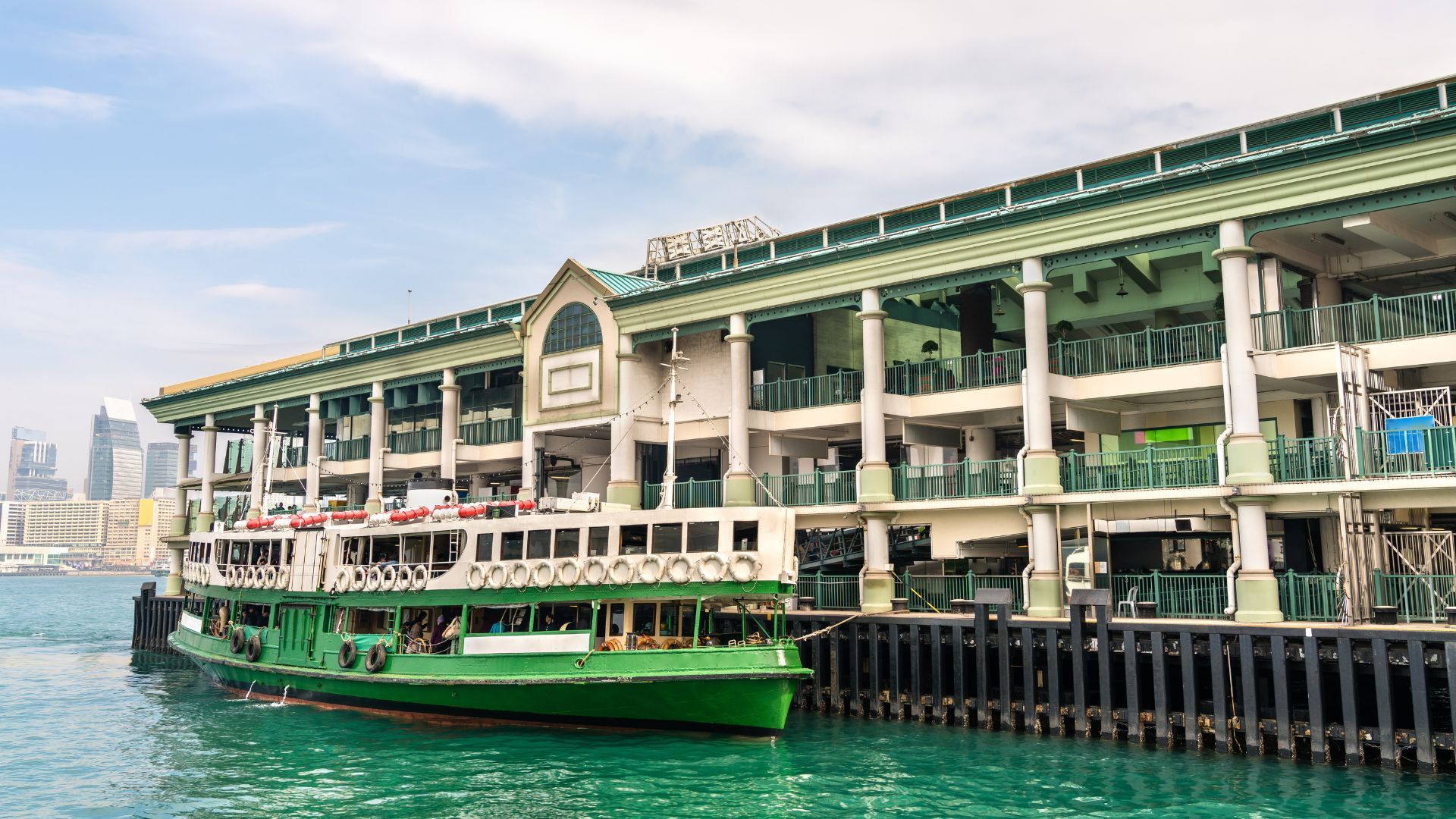
Another fascinating way to get around the city while soaking up those harbour views is through the ferry. While there are 11 companies offering ferry services in Hong Kong, the most famous is Star Ferry. The two main routes connecting Hong Kong Island and Kowloon are Central to Tsim Sha Tsui, and Wan Chai to Tsim Sha Tsui. The ferry runs every 6-10 minutes, from 6.30 am to 11.30 pm. Ferries also travel from Hong Kong (Central Ferry Pier) to other islands like Lamma Island and Cheung Chau Island. For the complete schedule of all ferries in Hong Kong, visit the Transportation Department’s official website.
Tram

Hong Kong’s oldest and most environment-friendly mode of transportation is its tram system. It exclusively employs double-decker trams, which promise a fun ride through bustling markets. Currently, there are 163 trams in Hong Kong that run from the west to east on Hong Kong Island, with 120 stops. Make sure to carry the exact change to pay the driver when you disembark.
Mass Transit Railway (MTR)

The easiest and most efficient way to get around the city is through the metro, also called the Mass Transit Railway (MTR). With a total of 12 operating lines, this metro system connects the entire region seamlessly. The Island Line (dark blue) runs throughout Hong Kong Island, from east to west. The Tsuen Wan Line (red) goes from Hong Kong to Kowloon, crossing the Victoria Harbour in between. It also connects the Island Line at Central and Admiralty while crossing tourist-friendly destinations like Mong Kok and Tsim Sha Tsui. Depending on the station, the trains run from as early as 5.50 am to 1 am. During peak season, the frequency of the metros is 2-4 mins, which increases to 4-6 minutes during the off-season.
Minibus
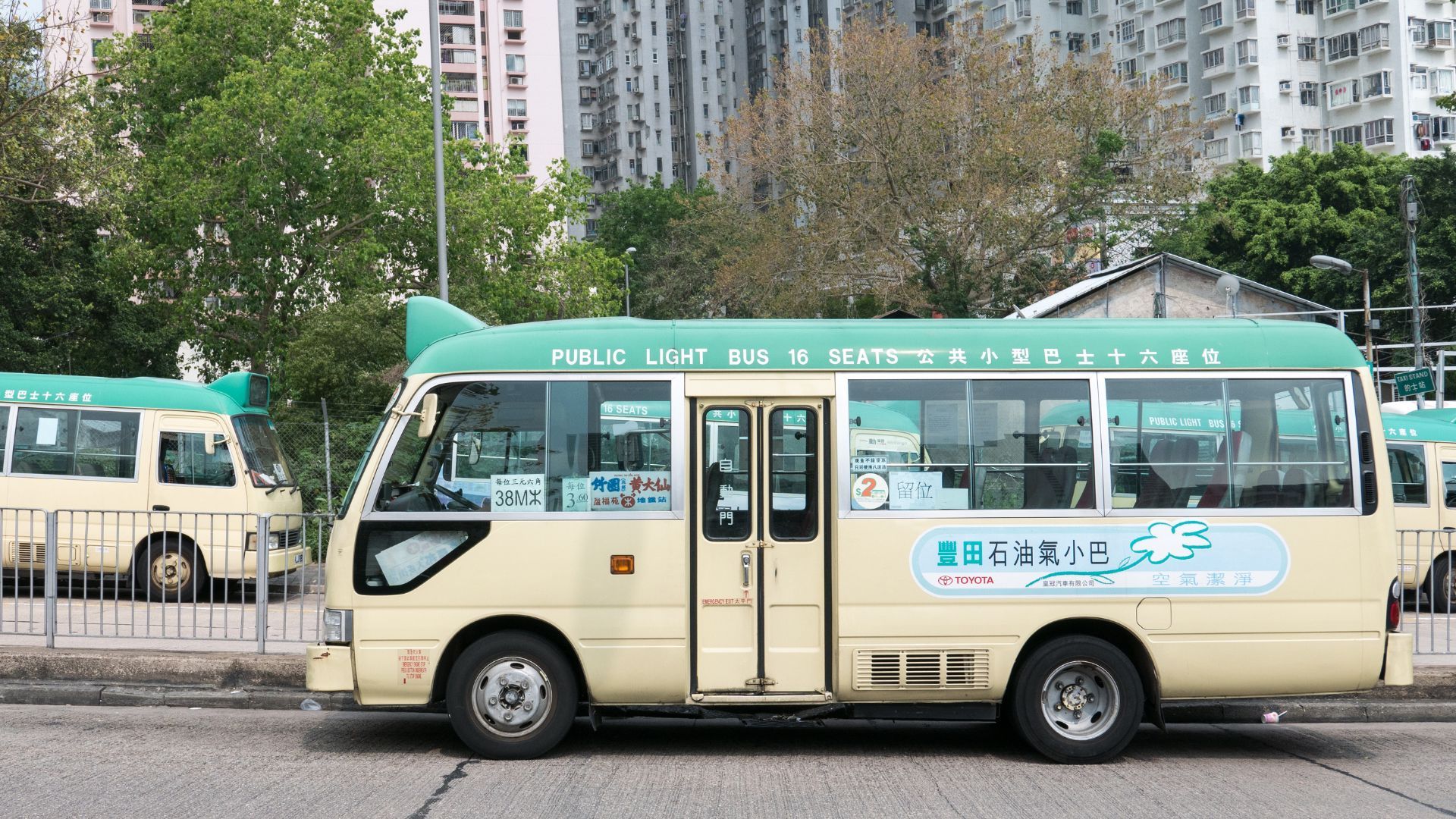
If you fancy a less crowded and cosier mode of public transport in Hong Kong, we recommend the Minibus. With just 16 seats, these buses come in two types: the Green Minibus (a scheduled service) and the Red Minibus (no specific route). However, unless you speak fluent Cantonese, we wouldn’t advise hopping onto the minibuses.
Taxi
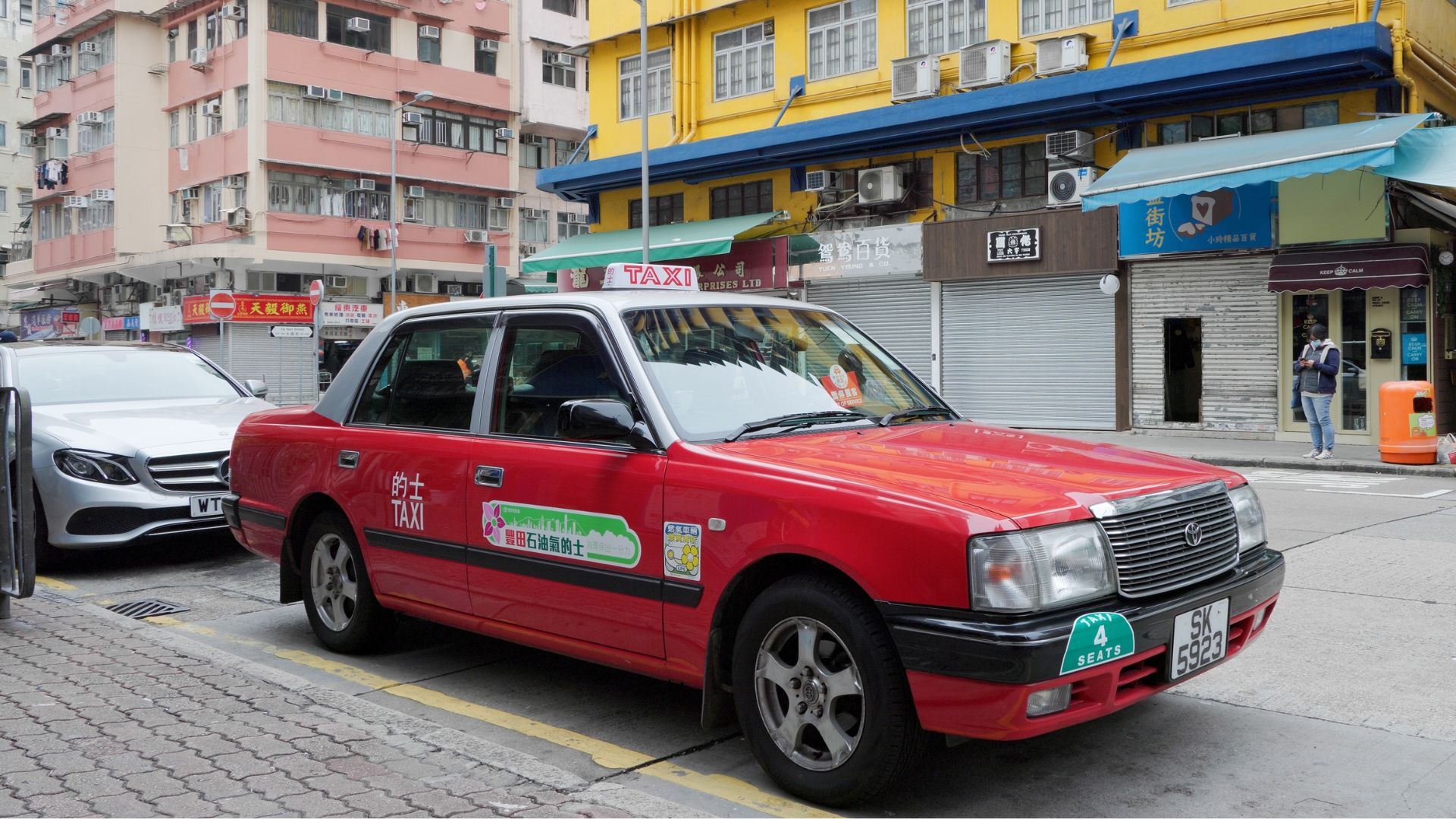
Colour-coded, meter-abiding, and reasonably priced — what’s not to like about Hong Kong taxis? The Red Taxis with silver roofs operate in Kowloon and Hong Kong Island and go everywhere except Lantau. The Blue Taxis, on the other hand, run only in Lantau. Lastly, the Green taxis with silver roofs provide service in the New Territories, including remote islands, mountain villages, natural parks, and more. Bear in mind that if you’re in a New Territory but your destination is Hong Kong Island, you must take the Red Taxi. While some taxi drivers converse in English, others may only speak Cantonese. Hence, it’s advisable to have your destination penned down in Chinese.
Local transport in Hong Kong — Cost, routes & apps
Whether you choose the bus, taxi, metro, ferry, minibus or tram, modern tourists have ample options to get by in Hong Kong. While all the modes are extensively interconnected throughout the city, MTR is quicker, the ferry takes the cake for the most surreal views, and the tram promises a story-book experience. Simply put, pick your choice of transport based on the time cap, need, and number of people.
Cost-wise, the basic fare for the red taxi is 24 HKD, with an additional 1.70 HKD charged for every 200 metres travelled beyond the destination, or for every minute the driver has had to wait. You can easily book a taxi using apps like HKTaxi App, Uber and FlyTaxi. The tickets for the Star Ferry are also fairly cheap, at just 2.20 HKD for a general seat, and 3.70 HKD for a top-deck seat.
The fare for MTR rides depends solely on the distance travelled, with average costs ranging from 4.50 HKD to 14.40 HKD. The tickets for metro rides can be bought from the MTR stations, and are of two types — single tickets for one-way journey to the destination and 24-hour tickets for unlimited travel throughout the day, barring special services like the Airport Express. The 24-hour ticket can be purchased online in advance or from the MTR stations at a cost of 65 HKD.
Similarly, the bus rates also depend on the distance travelled and can range anywhere between 4.50 HKD and 47 HKD. It’s important to note that if you’re paying by cash, the fare must be paid with exact change. Book your seat on the bus easily using apps like Citymapper, Citybus, and Hong Kong Bus Route.
Shop the best travel experiences here
A much simpler way to finance your commute in the city is via the Octopus Card. This efficient payment tool allows cash-free transactions at all major public transport services, as well as for entertainment, shopping, dining and more. There are two ways to get your hands on the Octopus Card:
(a) Download the Octopus app on your mobile: Simply download the Octopus app on your Apple or Huawei smartphone and top up your balance without standing in long queues. This can be done using your debit or credit card. It’s important to note that you must pay a refundable deposit of 50 HKD on installing the app. On culminating the Hong Kong holiday, apply for a refund of the deposit and the remaining value on the app.
(b) Get the physical ‘Tourist Octopus’ card: Starting at 39 HKD, this card features a striking Hong Kong design and makes for a valuable souvenir. There is no initial deposit for this card, and it can be reused on your subsequent visits to the city. The card can be purchased at MTR and Ferry customer service centres, as well as the Admiralty Bus Station. Additionally, it is also available at the MTR customer service centre at the airport. The card can be recharged at MTR stations, and common stores like 7-Eleven, Circle K, Starbucks, and McDonalds. Before leaving the city, head to any MTR customer service centre to claim a refund on the card.
This Octopus card and app helps you make cash-free payments, and are especially convenient on trams and buses where you need to pay in exact change.
(Main and Feature Image Credit: WR studio/Shutterstock)
Related: Mong Kok Guide: Best Places To Eat, Drink, And Explore In The Trendy Hong Kong Neighbourhood
Frequently Asked Questions (FAQs)
How do I pay for public transportation in Hong Kong?
Most modes of public transport in Hong Kong accept cash (in exact change). However, the easiest way is to opt for cash-free transactions using the Octopus App or Octopus Card.
What is the MTR, and how extensive is the network?
Hong Kong’s metro system is called the Mass Transit Railway (MTR). It operates along 12 lines and connects the entire region seamlessly.
Can I use the same Octopus Card for multiple modes of transportation?
Yes, you can use the same Octopus Card for multiple modes of transport. Additionally, you can use the card to pay for shopping, entertainment, dining, etc.


